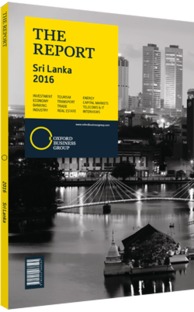Upscale apartments gain in popularity on the Sri Lankan real estate market
As of late 2015 Sri Lanka’s Western Province made up just 6% of the country’s total land area, but was home to 28% of the population, according to the Ministry of Megapolis and Western Development (MMWD), which was formed in mid-2015. Patali Champika Ranawaka, the minister of megapolis and western development, told local media in December 2015 that the government anticipates that the population will be around 8m by 2030. In an effort to prepare for this influx of new residents, the new ministry is implementing an urban development plan known as the Western Region Megapolis Planning Project.
Transition
Developers have focused their efforts on residential units – primarily standalone houses – on the outskirts of major cities. However, a growing percentage of residents have moved into apartments, which are becoming common in urban areas. “We now have accelerated urban sprawl growing twice as fast as the population,” Nayana Mawilmada, the director-general of the Urban Development Authority (UDA), told local media in late 2015. “[But] we are on the cusp of the transition into apartments…. So the transition we need to make as a culture is from single-family units to high-density communities.”
Meeting Demand
This shift has been facilitated by local developers, who have completed or are in the process of building a considerable number of apartment buildings in Colombo and surrounding areas. In September 2015 one of the country’s largest developers, John Keells Holdings, reported that nearly 200 of the 450 residential units in its Cinnamon Life mixed-use project had been booked. Similarly, Shangri La Hotels and Resorts is in the midst of development work on One Galle Face, a $450m mixed-use project in Colombo that includes 406 apartments, which were reported as 50% booked as of February 2016. Both projects are scheduled for completion in 2018.
Apartments at both projects are aimed at the luxury market. “Most of the demand for our residences comes from local residents, Sri Lankan diaspora and foreign investors,” Rajeev Garg, director of finance and deputy general manager at Shangri La Hotels and Resorts in Sri Lanka, told OBG. “This market is driving demand for high-end residential space in Sri Lanka, not just from us but also from our competitors.”
Indeed, according to Jones Lang Lasalle (JLL), as of the end of the second quarter of 2015 some 95% of the units made available in 10 recently completed residential projects – all at the higher end of the market – had been sold. Additionally, residential units in 16 other projects were reportedly selling quickly.
Other Segments
According to the Research Intelligence Unit, a Colombo-based real estate market research firm, as of early September 2015 Sri Lanka was home to around 2660 luxury apartment units, but this figure is expected to jump to 6000 by 2018-19. According to JLL, “high borrowing costs have made apartment prices unaffordable. As a result, the apartment market is largely restricted to only high-income-earning resident Sri Lankans, (RSLs), non-RSLs and foreigners.” To meet the housing requirements of the expanding Western Province population, however, most players agree that developers will have to build residential units aimed at low- and middle-income Sri Lankans. Activity in these areas has lagged behind the luxury segment. Fairway Holdings announced in June 2015 that it planned to invest $10.3m in a middle-income apartment project, which will include 128 residential units.
Meanwhile, expansion in the low-income housing segment has been unplanned, with some level of sprawl. The UDA, working with civil society, has begun implementing an urban regeneration programme that aims to move some 65,000 shantytown dwellers into formalised apartments. As of early 2016, 15,000 units were completed or under construction. Much of the mandate resolving issues of sprawl is expected to be taken up by the MMWD, working alongside UDA.
You have reached the limit of premium articles you can view for free.
Choose from the options below to purchase print or digital editions of our Reports. You can also purchase a website subscription giving you unlimited access to all of our Reports online for 12 months.
If you have already purchased this Report or have a website subscription, please login to continue.

